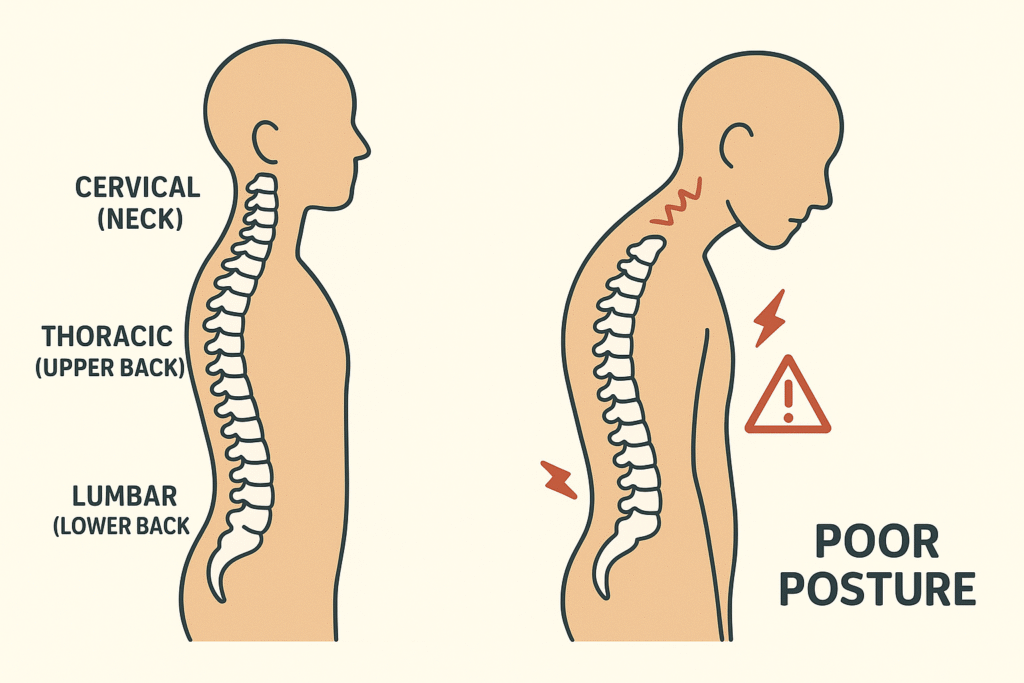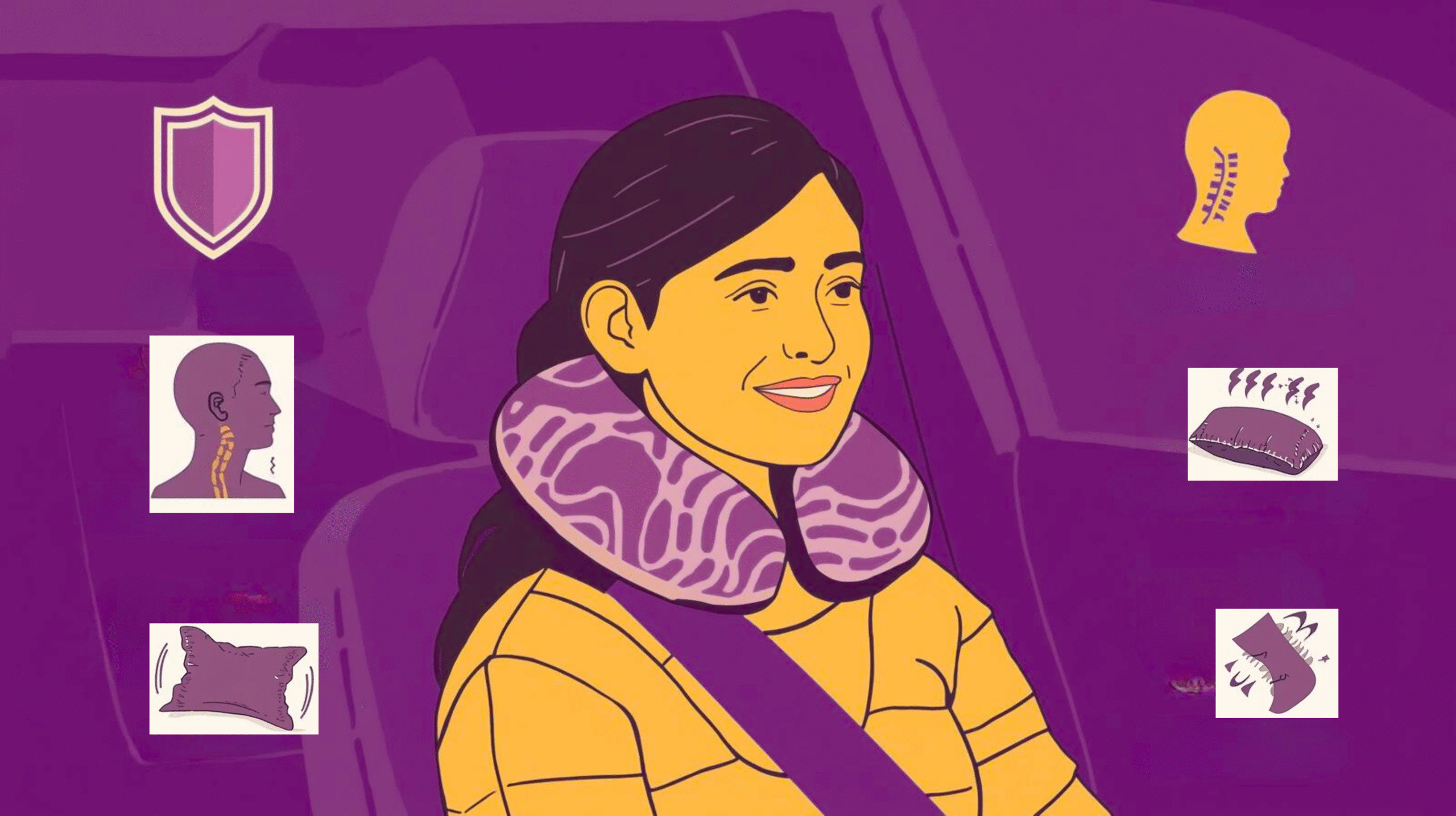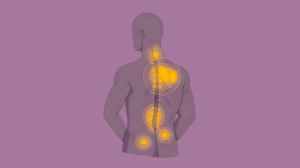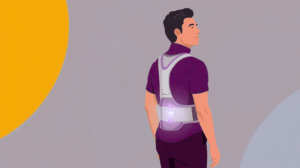It is estimated that on a daily basis, millions of people drive cars which can be of short distances such as commuting to work, long routes or trips around a city. Spending long durations sitting is not good for your health despite the fact that cars offer convenience and freedom. Neck pain or stiffness is one of the most frequent concerns of drivers and passengers during and after long trips. Improper posture and lack of adequate support during driving may lead to serious pains in the joints, particularly in the neck and the back [1].
Importance of Comfort and Safety in Driving
Complete attention is necessary when driving, but some minor pain in the neck can make it difficult for one to stay in focus. The cervical spine is put under stress due to road vibrations, poor posture and extended hours of driving, which causes exhaustion and slower reflexes. Thus, comfort is not a nice-to-have but a safety need [2].
The Role of Neck Support in Preventing Discomfort and Injuries
Along with reducing the stiffness and constant pain, neck supports in cars combine with headrests to maintain the natural C-curve of the spine and reduce the risk of whiplash during accidents.
Quick Overview of the Article’s Purpose
This paper describes car neck supports and the process of using them so that you can select the most suitable one that can make driving safer and comfortable. It provides details about their types, uses, advantages, best practice, and functions.
Understanding Car Neck Support
Definition of Car Neck Support
A car neck support is a specially designed cushion, pillow, or attachment added to a vehicle seat’s headrest area. Its primary purpose is to maintain the natural curve of the neck (cervical spine) and prevent strain during driving. Unlike ordinary pillows, car neck supports are engineered with ergonomics in mind, ensuring that both comfort and spinal health are addressed.
These supports can be simple memory foam cushions or advanced orthopedic devices with adjustable angles, breathable fabrics, or even massaging features.
Difference Between Regular Pillows, Headrests, and Neck Supports
Many drivers initially confuse regular pillows, factory-installed headrests, and neck supports. While they appear similar, their functions differ:
- Regular pillows: Designed for sleeping or lounging, they lack structure and often encourage poor posture when used in a car.
- Car headrests: Integrated into vehicle seats, they primarily serve as a safety mechanism, preventing whiplash during accidents. However, they are not always ergonomically shaped for everyday comfort.
- Neck supports: These are add-ons that combine comfort, health, and safety, bridging the gap between the headrest’s protective role and the pillow’s comfort.
Reasons Drivers Need Neck Support
Neck supports are not a luxury; they are increasingly becoming a necessity for modern drivers. Reasons include:
- Long trips: On highways and long-distance drives, static posture leads to cumulative muscle strain.
- Posture correction: Many drivers slouch or crane their neck forward, leading to “tech neck” or misalignment of the cervical spine.
- Medical relief: People with arthritis, cervical spondylosis, or prior neck injuries require extra support to avoid aggravation.
- Comfort for passengers: Passengers, especially those napping during travel, benefit from neck supports as they reduce side-to-side motion.
Relationship Between Neck Support and Spinal Alignment
The human spine consists of three main curves: cervical (neck), thoracic (upper back), and lumbar (lower back). For ideal health, these curves must remain in balance. A poorly supported neck disrupts this balance, leading to:
- Compensatory strain in shoulders and lower back.
- Increased risk of herniated discs.
- Chronic pain conditions.

Car neck supports ensure the cervical spine retains its natural curve, thereby protecting the entire spinal structure. Maintaining spinal alignment while seated significantly reduces the onset of musculoskeletal disorders [3].
Benefits of Car Neck Support
Car neck supports provide a multi-dimensional range of benefits, extending to health, comfort, and safety.
Health Benefits
- Prevents neck pain and stiffness: By keeping muscles in a relaxed, supported position, neck supports prevent tension build-up.
- Reduces risk of whiplash in collisions: When combined with car headrests, neck supports minimize the sudden jerk effect that causes whiplash.
- Improves posture: Good posture reduces the load on spinal discs and muscles, preventing degenerative changes [4].
- Supports individuals with medical conditions: Drivers with arthritis, scoliosis, or chronic neck pain find significant relief using specialized supports.
Comfort Benefits
- Increases comfort on long drives: Neck supports distribute pressure evenly, allowing for longer periods of driving without discomfort.
- Helps passengers rest or sleep better: Passengers can nap without experiencing sore muscles or awkward head angles.
- Enhances travel experience: A well-supported neck reduces fatigue, leading to a more enjoyable journey.
Safety Benefits
- Reduces driver fatigue: A fatigued driver is a dangerous driver. Proper neck support helps maintain alertness.
- Keeps eyes at safe road level: Good posture ensures the driver maintains the correct field of vision.
- Minimizes distractions: Pain-free driving allows drivers to concentrate fully on road conditions, traffic signals, and hazards.
Types of Car Neck Support
Car neck supports come in different materials and designs to match drivers’ comfort, health, and travel needs.
Foam Cushions
- Memory foam: Contours to the neck, reduces pressure points, ideal for cervical pain [5].
- Orthopedic foam: Firmer, corrects posture, often recommended for chronic pain.
Inflatable Neck Pillows
- Portable and adjustable firmness.
- Easy to store, lightweight, but less durable.
- Best for business travelers or occasional drivers.
Gel-Based Supports
- Stay cool by dispersing heat.
- Durable, often paired with foam.
- Great for warm climates or sweaty drivers.
Adjustable Headrest Attachments
- Built-in (in luxury cars) or add-on models.
- Allow height/angle adjustments for multiple drivers.
- Best for families sharing one vehicle.
Luxury and Smart Supports
- Heated models: Relieve stiffness and help in cold weather.
- Massaging models: Ease tension and fatigue.
- Smart supports: Use sensors/apps for posture tracking.
- Costly, but combine comfort with health benefits
How to Choose the Best Car Neck Support?
With so many options available, choosing the right neck support requires balancing comfort, health needs, and budget.
Material Considerations
- Foam: Best for posture correction and pain relief.
- Cotton or fabric covers: Breathable, easy to wash.
- Leather: Stylish but can retain heat.
- Mesh: Promotes airflow, ideal for hot climates.
Material choice influences durability, hygiene, and comfort.
Ergonomic Design
An effective neck support must follow the natural curve of the cervical spine. Features to look for include:
- Contoured shapes.
- Adjustable angles.
- Balanced firmness; neither too soft nor too rigid.
Compatibility with Car Seat and Headrest
Not all supports fit every vehicle model. Buyers should:
- Check headrest size before purchase.
- Ensure straps or clips are secure.
- Avoid oversized cushions that block rear visibility.
User-Specific Needs
Different drivers have unique needs:
- Professional drivers: Require fatigue reduction and posture support.
- Passengers: Benefit from softer, sleep-friendly cushions.
- Children: Need age-appropriate designs that prioritize safety.
- Seniors: Require extra cushioning to relieve stiffness.
- People with medical conditions: May need orthopedic or doctor-recommended products.
Price vs. Durability
- Budget models: Usually last 6-12 months.
- Mid-range options: Offer better materials and durability (1-2 years).
- Premium support: Can last over 3 years with proper care.
The best approach is to balance initial cost with expected lifespan.
Reviews and Expert Recommendations
Before purchasing, consumers should:
- Read customer reviews for real-world experiences.
- Look for expert recommendations from physiotherapists or orthopedic specialists.
- Avoid unverified brands with inconsistent quality
Usage and Maintenance Tips
Even the best car neck support can fail to deliver benefits if not used correctly. Proper placement, seat adjustment, and maintenance are key.
Correct Placement of Neck Support
- Position the cushion so that it aligns with the natural curve of the cervical spine [6].
- Avoid placing it too high or too low, which can strain muscles.
- Ensure it sits flush with the headrest.
Adjusting Car Seat with Neck Support
- Keep the seat recline between 100-110 degrees for optimal posture.
- Adjust seat height so eyes are level with the road.
- Align lower back with lumbar support to complement neck support.
Cleaning and Care
Different materials require different maintenance routines:
- Foam: Spot clean with mild detergent.
- Leather: Use leather wipes to avoid cracks.
- Fabric: Machine wash removable covers.
- Gel or mesh: Wipe clean with a damp cloth.
Replacement Frequency
- Replace every 1-2 years depending on usage.
- Signs of wear: sagging, lumps, or loss of firmness.
- Regular replacement ensures consistent support and hygiene.
Common Mistakes to Avoid
Even with the best car neck support, drivers often make mistakes that reduce effectiveness or even worsen discomfort. Avoiding these pitfalls ensures maximum benefit.
Using the Wrong Size or Shape
- Oversized cushions: Push the head too far forward, causing unnatural neck flexion.
- Undersized cushions: Fail to provide full coverage, leading to gaps and uneven support.
- Tip: Always measure your car seat and compare it with product dimensions before buying.
Incorrect Positioning
- Too high: Forces chin downward, leading to strain.
- Too low: Causes head to tilt backward, compressing cervical discs.
- Best practice: Position so the cushion aligns with the cervical curve, not the skull or shoulders.
Ignoring Compatibility with Seat Design
- Some cars have contoured seats that may not fit every neck pillow.
- Using incompatible supports can lead to slipping, instability, and reduced effectiveness.
- Solution: Choose designs with adjustable straps or clips.
Choosing Low-Quality Products
- Cheap cushions lose shape within weeks.
- Poor stitching leads to wear and tear.
- Low-density foam may collapse under weight.
- Advice: Invest in mid-range or premium products with proven durability.
Over-Reliance on Neck Support
- Neck cushions are aids, not substitutes for healthy driving habits.
- Without proper seat adjustments or stretch breaks, discomfort may persist.
- Key takeaway: Combine supports with lifestyle habits like posture correction and mobility exercises.
Car Neck Support for Different Needs
Different drivers and passengers have unique physical requirements. The right neck support can improve comfort, health, and safety for specific groups.
For Long-Distance Drivers
- Truckers, delivery drivers, and commuters spend hours behind the wheel.
- Benefits include:
- Reduced muscle fatigue.
- Improved spinal alignment.
- Better focus due to reduced discomfort.
- Recommended products: Firm memory foam or orthopedic supports with lumbar add-ons.
For Office Workers
- Many office workers suffer from “tech neck” due to prolonged computer use [7].
- Neck supports help counteract forward head posture while driving.
- Using ergonomic designs can reverse strain accumulated during desk work.
For Seniors
- Older adults often deal with arthritis, stiffness, or reduced flexibility.
- Neck supports provide cushioning to ease pressure on cervical joints.
- Heated or massaging models can relieve stiffness and improve blood circulation.
For Kids
- Children’s smaller body frames require specialized designs.
- Benefits include:
- Preventing the head from flopping forward during naps.
- Providing extra cushioning in case of sudden stops.
- Always pair with age-appropriate car seats or boosters for safety.
For Medical Conditions
- People with arthritis, cervical spondylosis, or herniated discs benefit from structured support [8].
- Orthopedic designs approved by physiotherapists are ideal.
- Important: Always consult a doctor before prolonged use, especially after surgeries or injuries.
Best Practices for Safe and Comfortable Driving
Car neck support is most effective when combined with good driving habits and ergonomics.
Combine Neck and Lumbar Supports
- Full spinal support reduces strain on both neck and lower back.
- Lumbar cushions prevent slouching, which complements cervical support.
- Together, they maintain natural spinal curvature.
Adjust Car Seat Properly
- Seat recline: Keep between 100-110 degrees to prevent forward head posture.
- Seat height: Eyes should align with road level.
- Headrest: Top should align with the top of your head for whiplash protection.
Take Stretching Breaks
- Even with support, sitting for hours causes stiffness.
- Recommended stretches:
- Neck tilts (side-to-side).
- Shoulder rolls.
- Gentle torso twists.
- Break every 1-2 hours during long drives.
Seek Medical Advice if Needed
- Persistent pain may signal underlying conditions.
- Consult physiotherapists, chiropractors, or orthopedic doctors if discomfort continues.
- Early intervention prevents chronic issues.
Develop Healthy Driving Habits
- Avoid slouching or leaning forward excessively.
- Keep both hands on the steering wheel for balanced posture.
- Stay hydrated and well-rested to minimize fatigue.
Conclusion
Driving long distances will tire you out and ache your neck. Foam, gel, inflatable, and high-tech car neck supports are the type of supports that will not cause pressure, align the neck spine, and improve posture. Finally, car neck support not only makes driving enjoyable; it also enhances focus, pain relief, making it convenient for drivers to be safe and healthier. A little investment can become worth the journey.
Prolonged driving not only pains your neck but also knees. Learn how you can control knee pain:
Frequently Asked Questions:
1. What is the purpose of car neck support?
Car neck support is designed to provide cushioning and alignment for the cervical spine while driving. It reduces neck strain, prevents stiffness, improves posture, and minimizes the risk of injuries such as whiplash during sudden impacts.
2. How do I know if I need a neck support pillow for driving?
If you experience frequent neck discomfort, stiffness, or fatigue during or after driving, you may benefit from a car neck support. Long-distance drivers, people with posture issues, and individuals with medical conditions such as arthritis are particularly likely to need it.
3. Are car neck pillows safe to use while driving?
Yes, when positioned correctly, car neck pillows are safe. They should not push your head too far forward or limit your ability to turn. Instead, they should align naturally with the neck and upper spine. Poorly fitted supports can cause discomfort or even distraction, so proper selection and placement are key.
4. Which type of neck support is best for long road trips?
For long trips, memory foam cushions are highly recommended because they mold to your neck shape and maintain support for extended periods. For warm climates, a gel-based cushion provides a cooling effect. Travelers who switch between cars may prefer inflatable options for portability.
5. Can car neck support prevent whiplash in accidents?
While no product can completely prevent injury in high-impact accidents, a good car neck support can help reduce the severity of whiplash by keeping the head and neck in better alignment. It works best when combined with properly adjusted seat headrests and seat belts.
References
- Aafreen, A., Khan, A. R., Khan, A., Ahmad, A., Shaphe, M. A., Alzahrani, A., … & Alajam, R. A. (2023). Decoding the impact of driving postures: comparing neck pain, mobility, proprioception in car and bike drivers with and without Forward Head Posture. Journal of Transport & Health, 33, 101719. https://doi.org/10.1016/j.jth.2023.101719
- NIOSH (2024). About Ergonomics and Work-Related Musculoskeletal Disorders. Retrieved from: https://www.cdc.gov/niosh/ergonomics/about/index.html [Viewed on 28 October 2025]
- Spine-health (2023). Taking Care of Your Neck: The Importance of Motion and Alignment. Retrieved from: https://spinehealth.org/article/taking-care-of-your-neck-the-importance-of-motion-and-alignment/ [Viewed on 28 October 2025]
- Pope, M. H., Goh, K. L., & Magnusson, M. L. (2002). Spine ergonomics. Annual review of biomedical engineering, 4(1), 49-68. https://doi.org/10.1146/annurev.bioeng.4.092101.122107
- Moon, K. A., Kim, J. H., Kim, Y. J., Park, J. H., & Jeon, H. S. (2024). A comparative study on the effects of three types of pillows on head-neck pressure distribution and cervical spine alignment. Phys Ther Korea, 31(1), 8-17. https://doi.org/10.12674/ptk.2024.31.1.8
- Hong, T. T. H., Wang, Y., Wong, D. W. C., Zhang, G., Tan, Q., Chen, T. L. W., & Zhang, M. (2022). The influence of mattress stiffness on spinal curvature and intervertebral disc stress—An experimental and computational study. Biology, 11(7), 1030. https://doi.org/10.3390/biology11071030
- Atakla, H. G., Mbaye, M., Dakurah, T. K., Quenum, M. K., Barry, L. F., Wague, D., … & Ba, M. C. (2023). Tech Neck Syndrome: A global epidemic of the modern era among students at the University of Abomey Calavi in Benin. Interdisciplinary Neurosurgery, 34, 101812. https://doi.org/10.1016/j.inat.2023.101812
- Bhusari, N., & Deshmukh, M. (2024). Effectiveness of physical therapy in treating a patient with cervical spondylosis caused by rheumatoid arthritis to improve the quality of life. Cureus, 16(6). DOI: 10.7759/cureus.62620























